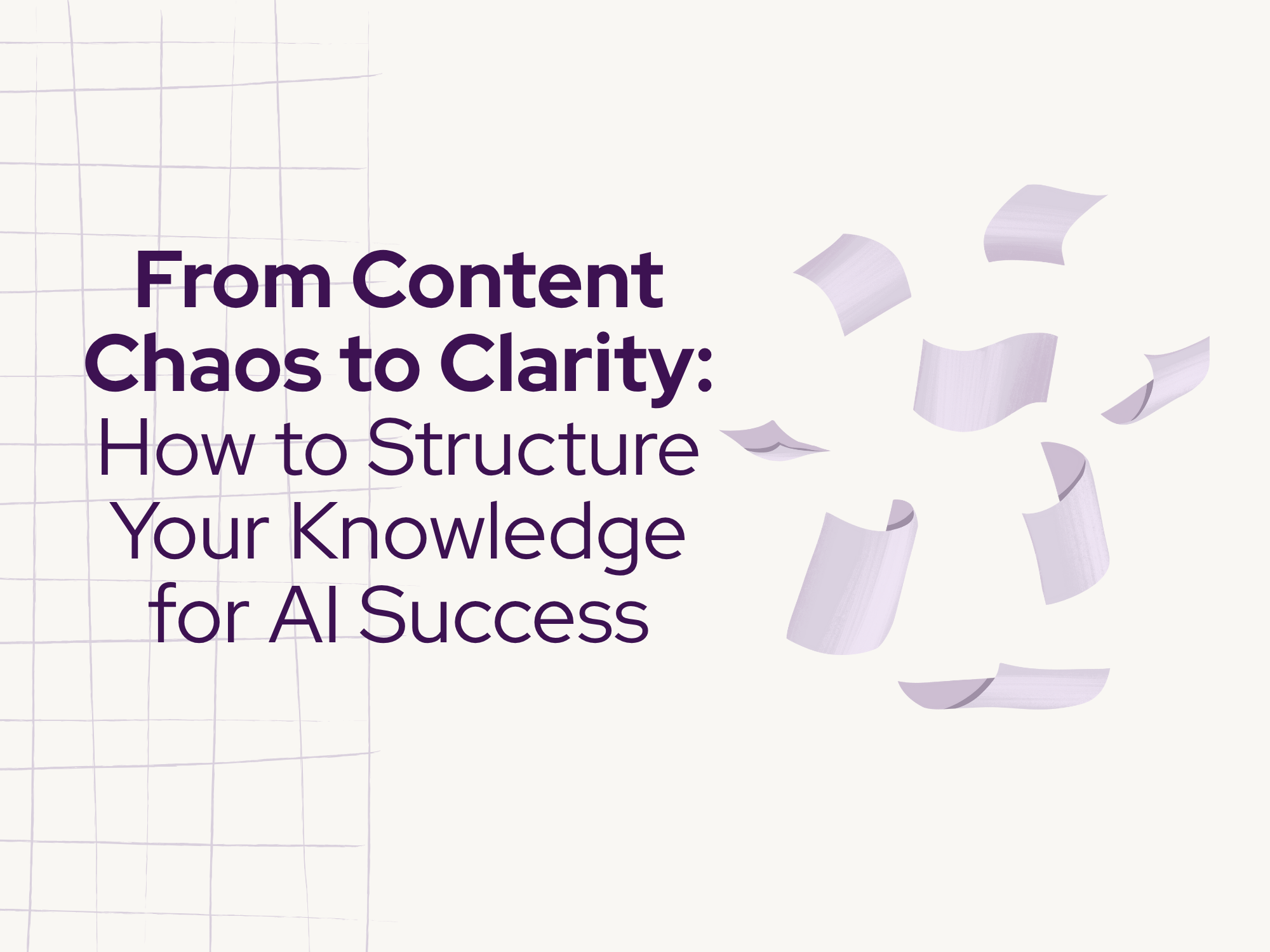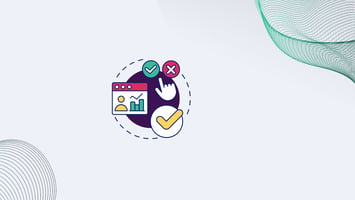Search is changing fast—and so are your members’ expectations. Instead of scrolling through links,...
Associations often have content spanning decades that serves many different audiences—executive directors, program managers, volunteers, members, and the public. While the knowledge is there, it’s frequently locked away in dense PDFs, scattered across poorly labeled folders, or mixed among a jumble of file formats. Organizational silos further complicate retrieving the right information when it’s needed most.
For AI to surface a meeting summary or policy document based on a member’s search, it must be able to access a dependable, current, and organized knowledge base. But the payoff goes beyond technology. Members, staff, and volunteers alike benefit from faster answers, better context, and greater trust in the resources they access every day.
Laying the Groundwork: How to Structure Association Knowledge
Creating an environment where both people and AI succeed requires thoughtful organization and clear processes. Below are key areas to focus on to build a solid knowledge foundation.
The Role of Content Management Systems
A modern content management system (CMS) is the backbone of digital knowledge organization for most associations. It does more than just store documents. By organizing content into hierarchies of pages and folders, enabling tagging and categorization, and managing versions over time, a CMS offers a framework for clarity and accessibility.
Every resource, whether a policy, event guideline, or meeting archive, should be assigned consistent metadata, sorted into logical categories, and managed through workflows that support creation, review, and publishing. With built-in roles and permissions, stakeholders across departments can collaborate on editing or approving content, helping to reduce duplication and maintain quality. When well-configured, a CMS enhances search functionality, making it much easier for both humans and AI assistants like Betty to locate relevant, up-to-date information without needing to dig through chaos. In this way, a CMS lays the foundation for clarity, accountability, and intelligent content delivery.
Structuring Habits
To make the most of your CMS, reinforce habits that support clarity and discoverability. Every new document or section should start with a brief summary stating its intended audience, coverage, and last update. Consistent naming conventions—combining dates and descriptive terms—make it easy to find the latest, authoritative version. Designing a folder structure that reflects your association’s committees, functions, or programs supports easier navigation and fosters consistency.
While Betty can intelligently surface relevant snippets from large or dense documents, maintaining distinct, focused files for frequently referenced topics or policies still benefits human users and helps ensure clarity—especially for onboarding new staff or addressing member questions.
Tagging and Categorization
To further enhance discoverability, leverage tagging and categorization extensively. Apply intuitive, standardized tags such as “Events,” “Policies,” “Governance,” or “2025” to all relevant content. These tags not only improve filtering and search results but, as your library grows, also allow for smarter personalization—helping users zero in on content tailored to their role or interests.
Ongoing Content Hygiene
Knowledge management is never “done.” To keep your content ecosystem healthy and trustworthy, it’s essential to schedule regular audits and clean-ups. Assign responsibility—whether a dedicated knowledge steward or a rotating team—to review your digital assets, retire outdated documents, and refresh content as needed. This ongoing attention prevents your nicely organized knowledge base from slipping back into fragmentation and decay over time.
Leveraging RSS Feeds and APIs
Automation is the next step in keeping your knowledge base current and actionable. When your CMS or website offers an RSS feed, AI tools like Betty can subscribe to updates and seamlessly ingest new content as it’s published—removing bottlenecks and streamlining the content training process.
APIs provide direct connections for real-time retrieval of documents, event updates, or policy changes, keeping Betty’s responses as accurate and timely as possible. These digital pipelines reduce manual management and help ensure your AI tools remain relevant in a changing environment.
Supporting AI Tools Like Betty
The clarity and currency of your content directly shape the quality of answers provided by AI tools. When content is fragmented, outdated, or poorly labeled, both AI and human users will struggle. Logical structure, clear labeling, and up-to-date information ensure that AI assistants like Betty can quickly locate and deliver the right content, providing reliable, accurate answers for all.
How Betty Learns From Your Efforts
The human element remains vital.
Betty’s ability to improve is rooted in thoughtful content management and active feedback. As your organization supplies well-structured content and your users provide feedback (flagging unhelpful answers, pointing out knowledge gaps, or identifying retrieval errors), Betty's responses become sharper and more relevant. She incorporates these updates to content in almost real time, ensuring your content management efforts make an immediate difference in the user experience.
Importantly, Betty’s ongoing improvement is a partnership: your staff and volunteers play a continuous role in adding resources, maintaining tags, monitoring analytics, and sharing insights and feedback from daily use. Formal knowledge stewards and collaborative contributions alike keep your content ecosystem healthy and ensure AI learning aligns with your association’s needs.
Getting Started: From Chaos to Cleanup
- Begin by auditing your knowledge base. Inventory resources, flag duplicates, and identify outdated or irrelevant materials.
- Develop templates that encourage brief summaries, consistent headings, and tagging for every new document. Train your team on these practices and keep guidelines clear and straightforward.
- Regularly gather feedback from members, staff, and volunteers to help you understand what works and what needs improvement. Use these insights to guide your association’s ongoing knowledge management strategy.
Disorganized knowledge can undermine even the best AI tools. But when your documents are clearly structured, named, and consistently refreshed—and when your CMS is leveraged alongside automation tools like RSS feeds and APIs—AI assistants like Betty evolve from generic chatbots into trusted, up-to-date partners. With a foundation of clarity and a commitment to routine stewardship, your association’s entire ecosystem becomes smarter, more supportive, and ready for whatever questions tomorrow may bring.
.png?width=173&height=70&name=Betty_RGB%201%20(1).png)



